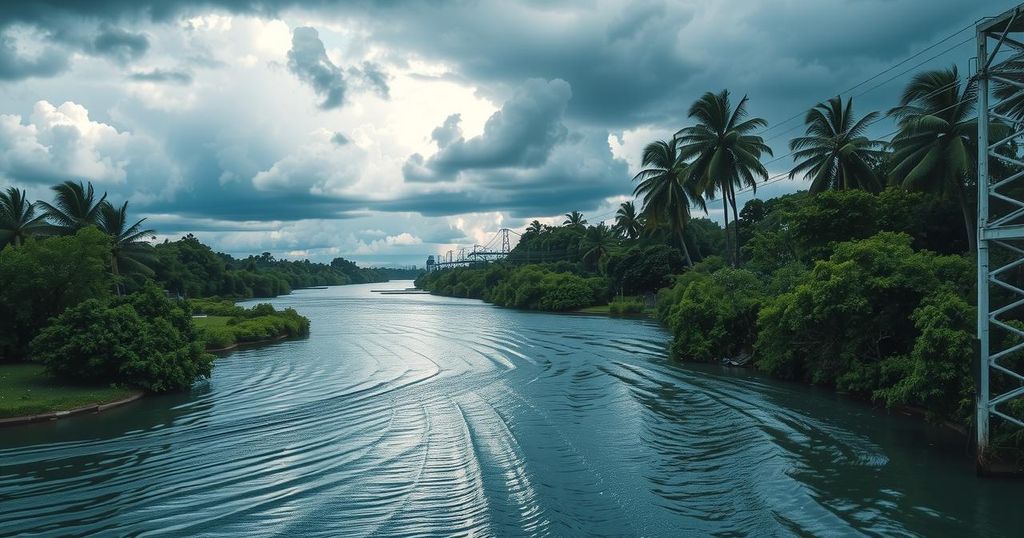The Panama Canal, significant for global trade, is increasingly threatened by climate change, with shifting rainfall patterns causing operational disruptions. Recent dry years have reduced shipping traffic due to lower water levels. Ongoing research aims to bolster the watershed’s health, with hopes for improved conditions in 2025 as current water levels rise.
The Panama Canal, an essential 82-kilometer waterway linking the Pacific Ocean to the Caribbean Sea since its opening in 1914, is vital for global trade. Recently, discussions regarding the United States reclaiming ownership of the canal have intensified, spotlighting its strategic importance in international shipping.
The operation of the Panama Canal has been increasingly impacted by changing rainfall patterns. Researchers predict that climate change could lead to more frequent disruptions, resulting in delayed shipping traffic and lowered channel accessibility.
The canal operates through a series of locks, allowing various vessels, including large Neopanamax ships, to traverse its system. This passage is economically advantageous, as it saves both time and fuel, allowing vessels to skip the lengthy journey around South America.
Mark Russo, Chief Science Officer at Everstream Analytics, highlights the canal’s global significance, stating, “Five percent of shipping globally traverses the Panama Canal. It’s a critical artery for global trade.” The water levels in Gatun Lake, essential for facilitating the passage of ships, are influenced by precipitation, evaporation, and the canal’s operation.
Over the past 30 years, Panama has experienced significant climate variability, including three notably dry water years in 1998, 2016, and 2024. These dry spell frequencies have become more tightly clustered, indicating a potentially alarming trend regarding the canal’s watershed health.
During scarce water years, the Panama Canal Authority has reduced the number of ships transiting while enforcing strict draft limits, which ultimately affects cargo transport efficiency. Russo notes the logistical implications, emphasizing the benefit of long-term planning for shipping companies dependent on the canal.
All recent dry years have coincided with El Niño conditions, which generally lead to reduced rainfall in Central America. While climate change’s influence on the El Niño–Southern Oscillation remains inconclusive, it is clear that precipitation patterns will directly affect shipping flow through the canal.
As climate change intensifies, storm severity is expected to increase, with a 10% rise in storm intensity observed over the past decades. While more rain may appear advantageous, excessive rainfall risks overwhelming infrastructure, as evidenced by severe flooding incidents threatening the canal’s operational capacity.
To combat these challenges, research initiatives are underway to study the hydrology of the watershed. Projects like the Agua Salud Project aim to improve the management of forest cover, which plays a crucial role in maintaining stable water levels in Gatun Lake.
Despite recent drought concerns, optimism exists for improved conditions in 2025, with water levels in Gatun Lake currently at their highest in five years. Continued efforts to understand and manage the watershed’s complexity will be crucial to sustaining this vital shipping route and its surrounding environment.
The Panama Canal is a critical component of global shipping, currently facing challenges due to climate change’s impact on rainfall. While water scarcity has resulted in operational restrictions and logistical delays in recent years, ongoing research initiatives aim to maintain the canal’s navigability. Optimism remains for improved conditions moving forward, highlighting the importance of proactive management amid evolving weather patterns.
Original Source: eos.org






